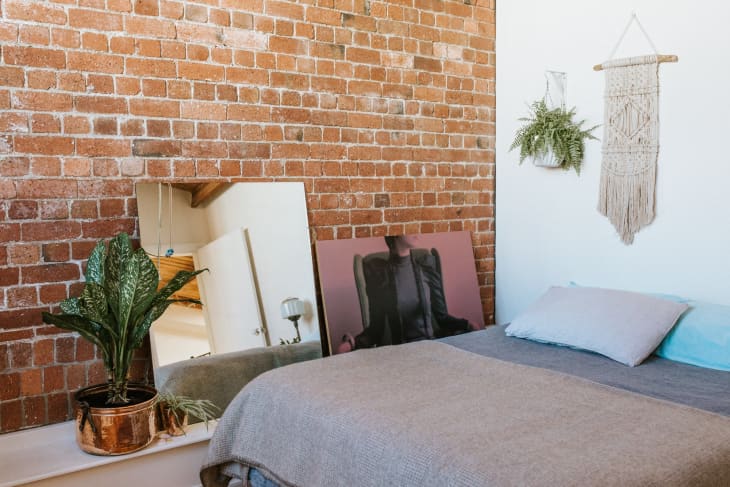If you want to add some greenery to your space but don’t want to spend more than five minutes a week tending to your houseplants, get yourself a couple of dieffenbachias. They’re some of the most recognized and widely available houseplants, and they also happen to be really easy to keep alive. Put them in your bedroom and you can almost forget about ’em.
Different Varieties
Dieffenbachias have thick stems and, showy, upright leaves that are edged in green and cream or yellow in the center. Larger plants work nicely for a floor planter, and smaller ones are great for a tabletop or windowsill. They come in a bunch of different varieties and hybrids, the variation being in the size and leaf shape and coloring. Dieffenbachia amoena (with cultivars like ‘Tropic Snow’) and Dieffenbachia bowmannii (cultivars include ‘Camilla’ and ‘Marianne’) are two major varieties.

Light
Dieffenbachias do best in bright, filtered light, though you’ll find they’re often tolerant of low light situations. Rotate the pot often to reduce legginess.
And like most tropical houseplants, dieffenbachias prefer warmth and humidity. Protect them from window drafts as best you can. If you notice the tips of the leaves are browning, this could indicate humidity is too low. To increase humidity, group your dieffenbachia with other houseplants or set it in a pebble-filled tray of water. (The pebbles are to lift the pot above the water line so that the roots don’t rot.)
Water
Watering is pretty straightforward with dieffenbachias: keep it consistent and don’t over do it. Always make sure the soil is dry a few inches down before watering. Dieffenbachias don’t like soggy soil, so it’s best to err on the side of caution and let them dry out a bit if you’re unsure.
Fertilizer
It’s a good idea to fertilize dieffenbachias at least a few times per year, up to once per month, to encourage new growth. Use a liquid houseplant fertilizer applied according to the package instructions.
Toxicity
Dieffenbachias are toxic if you eat any part of the leaves, stem, or roots—it can cause pain, swelling, and difficulty swallowing. So keep the plants out of reach of your pets and children.
Hải Yến
Gió bạn với cây tự buổi nào ,
Gió về cây lại ngất ngư chao .
Gió đi cây sẽ im lìm đứng,
Như kẻ lỡ làng dạ khát khao .
Hải Yến
Gió bạn với cây tự buổi nào , Gió về cây lại ngất ngư chao . Gió đi cây sẽ im lìm đứng, Như kẻ lỡ làng dạ khát khao .



